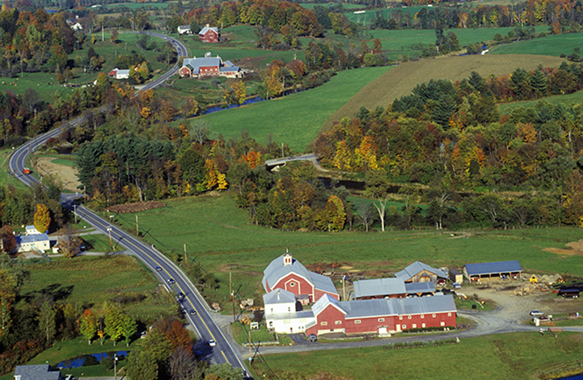By Courtney Robinson and Jennifer Keys Adair | Originally Published at Chicago Reporter. February 27, 2015 | Photographic Credit; Courtesy of The Library of Congress
Childhood lessons about black history often overlook important but less well-known figures including (from left) Bayard Rustin, Andrew Young, (second from right) James Farmer and John Lewis, who join Rep. William Fitts Ryan (center) in New York in 1965 during the Civil Rights Movement.
Only minimal versions of black history will be taught or learned at most schools, even during February, the month designated to celebrate it.
Black children going to school in the United States are given a month, a speech and a hero to cling to as they navigate this vast historical perspective during Black History Month. The strength, strategy and organization of black political movements — such as Civil Rights, Black Power and even Black Lives Matter — are not part of the curriculum. The contribution of black women is perhaps the most lacking.
Yet, white children are given a full year to learn about the positive contributions and historical events their ancestors led and produced. The contributions of Black Americans have been minimized in the broader American history.
This disparity is dangerous for all children being asked to live peacefully in an increasingly non-white world.
Common, the rapper who played civil rights activist James Bevel in the film “Selma” and also joined John Legend on the Academy Award-winning song “Glory,” graciously pointed out that the film awakened his humanity because he “got to know the people of the Civil Rights Movement.”
Our concern is that the humanity and complexity of such historical moments, particularly when it comes to black history, are left out when we talk with children. We speak in terms of facts and heroes, with lots of focus on Rosa Parks and Martin Luther King but few others. In reality, hundreds and thousands of people – women and men – worked and still work in small and large ways to change laws and society.
We need to tell children about the sacrifices that turned ordinary people into those who marched even when threatened with dogs and guns, who protested despite mocking and who became allies at the risk of losing their own lives.
The absence of these lessons, which explain the origin of historical movements and the complexity of history, from pre-K to 12th grade has had a profound impact on children. The undergraduates we teach in our teacher education and African-American Studies courses are often saddened, overwhelmed and uncomfortable when talking about the negative aspects of white history — lynchings and Jim Crow laws — that are a part of black history. For students of color in particular, there is sometimes astonishment that they have entered adulthood without a clear understanding of how bad things were.
We cannot wait until students enter a university environment to begin to talk about black history.
“Selma” reminds us that the Civil Rights Movement was significant for many racial and religious groups. Children who learn about the contributions of people of color only in their designated months and only with lessons about one or two historical figures are denied the opportunity to awaken their humanity.
There are dangerous consequences to leaving black history to be taught through outdated texts with little nuance. For example, the textbook battles in Texas included the use of the word “Negro” in reference to contemporary black history and minimized the impact and brutality of slavery. Black people are virtually non-existent in Texas textbooks or portrayed in undesirable ways. Black children’s racial identity was challenged as they were bombarded with negative stereotypes in the books.
To counter such efforts, children need a fuller, deeper sense of movement, political organization, community, intelligence and survival that is a part of the African-American experience in the United States. Here are some ideas for parents and teachers:
- Allow children to experience the beauty of black history, not just the difficult parts. Increase how many African-American authors, artists, politicians, journalists, intellectuals and musicians children know and care about.
- Be honest with children about who was responsible for the oppression. It is not just individuals but society — all people — who play a role in allowing such conditions. It’s OK to tell kids this.
- Think carefully about where your ideas about history come from. Help children learn from first-hand accounts of black history, including reading and thinking carefully about slave narratives.
- Search out books that show black characters, not just historical books that feature black characters.
- Teach children about movements, not just heroes. Talk about Ferguson, not just Mike Brown or Darren Wilson. Black Lives Matter encompasses Eric Garner and so much more.
More children should experience an awakening of their own humanity through the stories of these movements. It will take more than a hero to fix the racially charged times we are still in. It will take the next generation.
Editor’s Curious Questions…Were you given the opportunity to study Black History? If so, at what stage in your education? Might it have changed your perception? And what about our children; will Black History be part of their curriculum?
Dr. Courtney Robinson is the Founder/CEO of the Institute for Excellence and Advancement. She is also an adjunct professor at Huston-Tillotson University, the oldest HBCU west of the Mississippi. | More by Courtney
Jennifer Keys Adair, Ph.D., is a professor of Early Childhood Education at The University of Texas at Austin, a young scholar fellow with the Foundation for Child Development and a public voices fellow with The OpEd Project. | More by Jennifer
This piece was reprinted by EmpathyEducates with permission or license. We thank the Authors, Professors Dr. Courtney Robinson and Jennifer Keys Adair, Ph.D., for their kindness, observations, research and what we believe might, hopefully, spark a vital conversation.












Leave A Comment